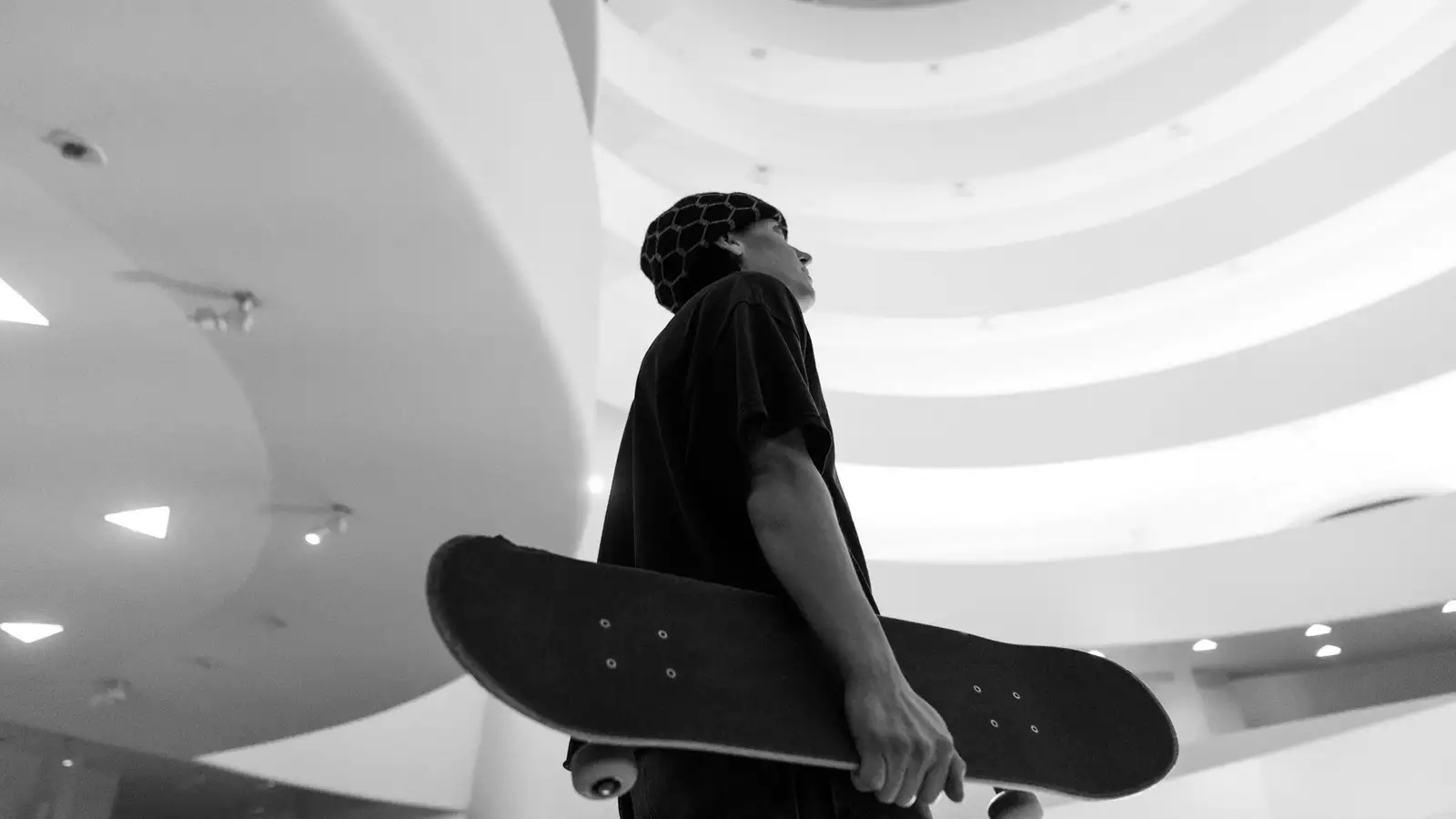
Ahead of Ken Burns’s Latest Docuseries, Co-Director Sarah Botstein '94 Shares her Path, Process.

One evening in late April, a figure dressed in black careened down the glowing white ramp of the Guggenheim’s six-story structure. Devoid of the usual suspects — the famous artworks, the throngs of visitors — the museum gave pro skateboarder Alexis Sablone ’08 the green light to do what would usually be verboten. Just a few days before Converse’s launch party for Sablone’s new AS-1 Pro sneaker took place in the museum’s rotunda, the Olympian and seven-time X Games medalist skated down Frank Lloyd Wright’s spiraling, quarter-mile-long ramp. Even for an athlete who has competed professionally for over two decades on some of the most challenging street courses, it was nonetheless, she says, “a wild experience” like no other.
Sablone, who holds degrees in architecture from Barnard and MIT’s graduate studies program, has long explored the relationship between skateboarding and the built environment. She’s done so not only through competitive skateboarding but through a busy architectural practice that keeps getting busier. Several recent commissions have called on Sablone to reimagine the way public space can be utilized by both skateboarders and the local community — a task that is well within her wheelhouse.
The first of these commissions happened in 2018 when Sablone designed Lady in the Square, a surrealist-looking sculpture at the center of Värnhemstorget, a public plaza in Malmö, Sweden. Inspired by the unique geometries of the face, Sablone translated those forms into a skateable work of art that removed the barriers between different user groups within the public realm: “So much of skateboarding is about exploring the city and finding things to skate that aren’t necessarily meant for skateboarding. That’s a big part of skateboarding culture.”
The project, says Sablone, puts forth a model that doesn’t really exist in the United States. “It’s in a public plaza, but it’s not a skate park; it’s sculptural but clearly skateable,” she says. “The Malmö project started to open up these other opportunities because people saw that it was possible and a different approach to making skateable spaces.”
A few years later, right before the pandemic, Sablone got a call from Paul King, one of the founding board members of Skate Essex, a nonprofit working to promote skateboarding in northern New Jersey. The organization was looking to update a favorite local DIY skating spot in Montclair, N.J. He asked Sablone if she would be interested in designing permanent metal and concrete sculptures to replace the existing wooden ramps. Sablone, who grew up in the 1990s with few designated places for skating, knows all too well why these DIY spaces are meaningful. She said yes to King and got to work.
“For me, the challenge was to make objects that were versatile and fun for a range of ages and skill sets but that didn’t immediately read as just a skate park,” she says. “I wanted to make each object kind of unique and open to interpretation.”
This past spring, Candy Courts, a series of brightly colored, skateable sculptures located on a former tennis court, opened to the public. The project, Sablone explains, was a real community effort and one that wouldn’t have happened if not for the young people involved. “It’s a great group of kids who are really outspoken and motivated to stand up for their spaces, and they really went above and beyond to speak to people in the city to fight for [their DIY space].”
Much of Sablone’s work centers around supporting the local skateboarding community. In 2022, she opened up a skate shop, Plush, with friend and fellow pro skateboarder Trevor Thompson, near her hometown in New Haven, Connecticut, in which she designed — and built much herself — the bright, airy interior. Inside, the white walls are lined with skateboards, clothing, and footwear, including the sneakers Sablone designed for Converse. The retail space, which hosts events out on the street, has also become a hub for local skateboarders.
The architect has several other projects coming down the pike, including a sculptural piece in marble made for an esplanade in Lisbon and a large-scale installation, Sun Seed, for a new skate park in Richmond, Virginia. And through a joint fellowship at the University of Chicago’s Gray Center for Arts and Inquiry, Sablone has been teaching a class called Skateboard Poetics: Style, Motion, and Space.
Even with so many design projects underway, she always makes time for skateboarding and recently got back from skate trips in Shanghai and Montreal. Last year, she was named the new head coach for the U.S. women’s skateboarding team in the 2024 Olympic Games in Paris.
For Sablone, good design has a similar attitude, and outcome, to skateboarding. “Something like the Guggenheim breaks all these rules,” she observes in the short film AS-1, created in partnership with the Guggenheim and Converse. “[It] kind of epitomizes what an architect sets out to do, like actually transform the way people move through and experience space. That’s exactly what skateboarding does. It changes the way you see everything around you. And suddenly there’s this new imaginative potential that wasn’t there before.”